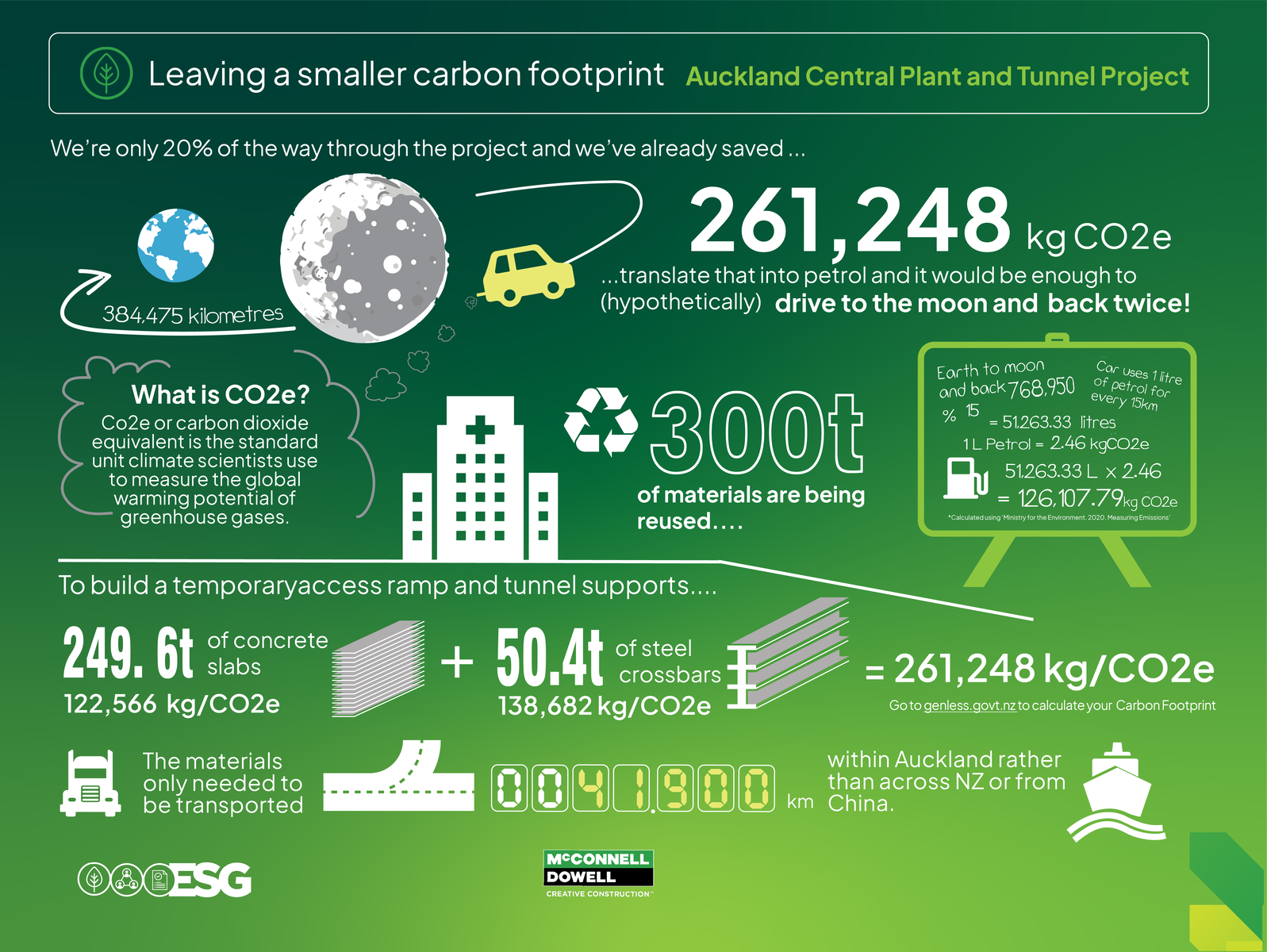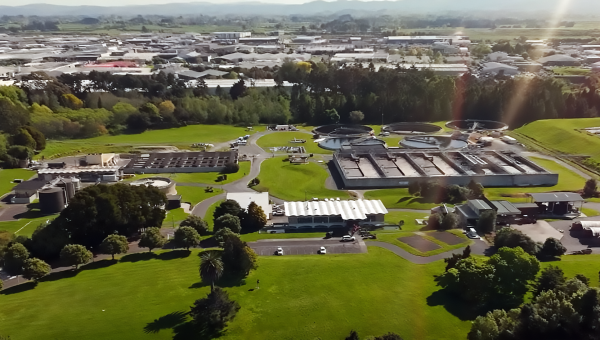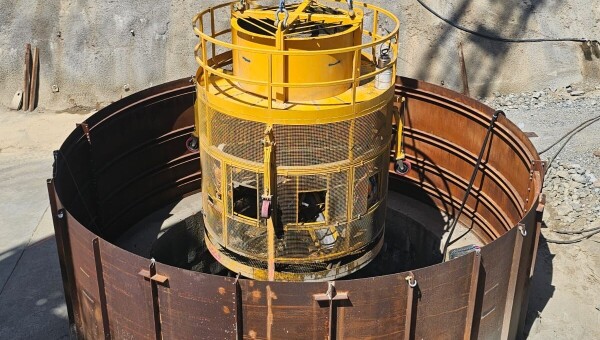The Auckland Hospital Plant and Tunnel project is proof that innovation and sustainability can go hand in hand. The team reduced the project's carbon footprint by 261,248 kg/CO2-e by repurposing local materials for a clever temporary works solution.
To alleviate the client, Te Whatu Ora’s, concerns about noise and vibration; and maintain public access the team came up with a temporary elevated ramp as an alternate access route to the worksite. The novel design diverted construction traffic away from sensitive stakeholders and medical equipment and provided safe access for the public, but it needed a lot of steel and concrete to build. The ramp was also a programme priority as it enabled other work onsite to start but the steel was estimated to take 20 weeks to arrive.
The team found the solution on the Ngā Hāu Mangere Bridge Project. They had recently completed temporary works and had 42.3 tonnes (t) of steel and 16 concrete panels weighing a total of 249.6 t that could be repurposed. Another 8.1 t of steel came from the McConnell Dowell Mechanical & Plant Yard in South Auckland. The materials were all transported to the site from within Auckland, rather than across the country or overseas, increasing the carbon savings.
Fast Facts:
- 300 t of steel and concrete was recycled
- 3 t of steel and
- 6 t of concrete pads came 18 km from the Ngā Hāu Mangere Bridge Project
- 18 t of steel came 23.9 km from the Puhinui Plant Yard
- Reusing these materials saved 261,248 kg/CO2-e
- Only travelled 41.9 km to get to site (rather than from China 11,160 km)





